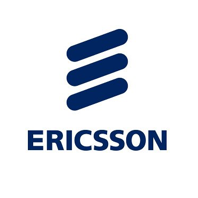-
Other - Ericsson Microwave Outlook – Global Demand on Microwave Backhaul Capacity
-
-

Global demands on microwave backhaul capacity and network build-out are far-reaching as the world heads towards 5G. But these are being met with a host of advances in microwave technology, additional spectrum, an efficient combination, and the use of machine intelligence.
Exactly when and how to introduce 5G New Radio (NR) will be decided nationally for each operator, but what they will have in common is the importance of not only securing spectrum for access but also for backhaul. It’s expected that there will be an increase in the variation of backhaul capacity needed for 5G NR, as operators choose to deploy with variable amounts of radio access spectrum and advanced radio features, to meet the specific needs at each location. Many have started shifting backhaul to future-proof frequency bands at new installations or when upgrading equipment.
E-band is not only becoming an essential backhaul band of high global alignment, but together with the 32GHz band, it will be an important prerequisite to facilitate the transition of some backhaul frequency bands to 5G NR access use. The 5G NR standardisation will enable a new way to backhaul, known as Integrated Access and Backhaul (IAB), or self-backhauling. This is expected to be useful for dense millimeter-wave 5G NR deployments on street-level sites.
With the introduction of 5G, the interest in E-band is high, as it can provide up to 10Gbps for even the most extreme dense urban sites. But capacities are constantly growing in all parts of the network, from urban to rural areas.
©2018 Ericsson
Ericsson is an Executive Member of GSA
-
Related Reports
-
 Read more
Read moreCapturing the 5G FWA opportunity: Ericsson white paper
Capturing the 5G FWA opportunity: A household view. Download here. How fixed wireless access for households capture the connectivity market.…
-
-
 Read more
Read moreEricsson Mobility-Report November 2023
Ericsson Mobility-Report November 2023 Continued strong uptake of 5G, with around 600 million new subscriptions added globally during 2023, shows…
-
-
 Read more
Read more5G-Monetization – Ericsson Mobility Report
5G-Monetization – Ericsson Mobility Report In many of my recent interactions with communications service providers, sustainability and revenue growth have been…
-
